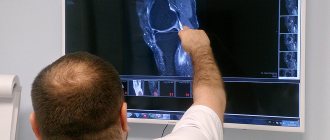Mild, moderate or severe pain in the lower abdomen in women, the causes of which can be different, is a very common complaint received from numerous patients - both very young and elderly. In some cases, although these are unpleasant, they are normal variants that do not indicate any pathologies. But, often they are one of the symptoms of a large list of diseases. First of all, gynecological health is under suspicion, although pain can also arise for other reasons. In any case, you need the help of specialists who will identify the source of the painful condition.
Types of lower abdominal pain
The nature of the pain may vary:
- pulling;
- pricking;
- aching;
- cramping;
- bursting;
- blunt;
- cutting;
- encircling;
- burning, as if burning from the inside.
Unpleasant sensations can begin abruptly and intensely, increase gradually, disturb the right, left or middle, radiate to the lower back and other areas. It can last for several minutes or days, stop intermittently or be constant.
The causes of lower abdominal pain in women can be divided into several main categories:
- physiological, caused by changes in the body;
- gynecological diseases;
- problems in the urinary system;
- disorders of the functioning of the intestines and diseases of the digestive system;
- other pathologies and conditions.
In choosing specific research methods and making the correct diagnosis, clarifying the nature, duration, and intensity of pain is of great importance. By studying the symptoms, doctors can assume a certain disease and outline the necessary direction in examining the patient.
Lower abdominal pain in women: physiological causes
In this case, pain is associated with physiological changes occurring in the body. They can occur at different stages of the menstrual cycle, early pregnancy, and be observed during hormonal changes (including during menopause).
Soon after fertilization, a woman may feel a nagging pain. This is due to the introduction of the egg into the endometrium of the uterus, the integrity of which is disrupted. As the fetus grows, the internal organs shift, which sometimes provokes severe discomfort.
Many girls experience severe pain during ovulation in the lower abdomen, the causes of which are hidden in changes in hormonal levels resulting from the rupture of the follicle and the release of the egg. They are often accompanied by other symptoms:
Before menstruation, pain is also a frequent companion for many women. If the patient has been examined, no pathologies have been identified, and unpleasant sensations do not interfere with her normal lifestyle, then such manifestations fit within the boundaries of the norm. When the pain is intense and provokes a serious deterioration in the general condition, dysmenorrhea (algomenorrhea) is usually diagnosed.
Symptoms
Various diseases of the female reproductive system cause severe muscle spasms, which lead to pain in the lower abdomen. The pain can be sharp, nagging, aching, growing and recurring regularly. After a detailed examination, the doctor will be able to establish the correct diagnosis and prescribe treatment.
If you experience similar symptoms, we advise you to make an appointment with a gynecologist at the Federal Scientific Center for Medical and Biological Agency. Timely diagnosis will prevent negative consequences for your health!
Pathologies of the reproductive system
There are many causes of pain associated with gynecological problems. Among the most common:
- Endometritis. It is characterized by inflammation of the endometrium, which can occur acutely or chronically. Often accompanied by menstrual irregularities, spotting, uterine bleeding, and nagging pain.
- Adnexitis. Inflammation of the uterine appendages is one of the most common diseases in gynecological practice. In addition to painful sensations (can be in one side or spread to the entire lower abdomen), patients are faced with signs of intoxication and fever. The disease is caused by bacteria, viruses or fungi.
- Endometriosis. In this disease, the cells of the uterus grow and end up outside the uterus. Accompanied by pain during urination, defecation, sexual intercourse and simply with sudden movements, heavy bleeding during menstruation. Regardless of the cycle, brownish discharge is observed.
- Uterine fibroids, which are usually characterized by dull pain in the pelvic area. Cysts and other benign, as well as malignant formations can cause discomfort of varying intensity and spasms.
- Spikes. They may be the result of inflammation in the genital organs, varicose veins and other diseases. Complications during pregnancy. This may include spontaneous abortion, placental abruption and other pathologies. In such cases, the pain is sudden and sharp, accompanied by bleeding from the genitals.
Separately, it is worth focusing on sexually transmitted infections - mycoplasmosis, gonorrhea, chlamydia, trichomoniasis and other diseases. They affect the reproductive organs, causing pain, profuse vaginal discharge of a pathogenic nature, burning, itching and are fraught with complications if left untreated.
How to recognize spleen diseases?
The spleen is localized in the right hypochondrium. Due to the presence of a dense membrane, the patient practically does not feel that the organ hurts. The only factor that is usually alarming is an increase in size, which can often be seen without the help of a doctor. Sometimes the pathology of the spleen manifests itself as follows:
- Injuries, parasites, poor ecology, and genetics can cause spleen disease.
- deterioration of immunity;
- “cotton” legs;
- elevated temperatures;
- frequent colds;
- increased heart rate;
- memory problems, etc.
- The following can cause the manifestation of pathological processes:
- neoplasms of a benign or malignant nature;
- helminths;
- vein problems;
- injuries of any nature (for example, fibrosis);
- disorders of the cardiovascular system;
- hereditary predisposition;
- cyst in an adjacent organ, etc.
Spleen diseases need to be treated comprehensively. Self-medication is prohibited even in the early stages. Only a doctor has the right to prescribe the necessary medications or other methods of therapy. Lack of adequate therapy will lead to dangerous complications. Medicines are selected individually, based on the type of disease and the characteristics of the patient’s body.
The properties of the spleen are not insignificant for a person, and therefore, having noticed the main alarming symptoms in its activity, which include pain or discomfort in the left hypochondrium, you need to undergo a full diagnosis, because such manifestations may indicate a disease. Therefore, you should never ignore symptoms and problems in organ dysfunction that indicate the first manifestation of the disease. If you do not identify the problem in time and do not properly treat your illness, this can lead to splenectomy, that is, surgical removal of the spleen. It is not vital for the body, but its absence is fraught with consequences such as increased sensitivity to most bacterial infections, as a result of which resistance to viruses and infections is reduced.
Pain on the right and left
In some cases, patients complain of pain in a specific location. Pain in the lower abdomen may occur in a woman on the right due to right-sided inflammatory lesions of the uterine appendages (adnexitis, salpingoophoritis), ileal spasm, tumor formations. Also in this place is the cecum, which has a vermiform appendix - the appendix. If it becomes inflamed, appendicitis develops and the patient needs emergency care.
The most common causes of pain in the left lower abdomen in women are secondary inflammation of the appendages, spasm of the sigmoid colon, tumor process, and ulcerative colitis. Sometimes the problem may be associated with disorders in the joints of the spine and their tissues, a herniated disc, or radiculitis.
Ovarian cyst
The ovaries contain follicles - sacs in which eggs mature. A mature follicle ruptures during ovulation and releases an egg. If this does not happen, it turns into a cyst. Such ovarian cysts are usually harmless and can go away on their own, but they can cause pain and an enlarged abdomen. When the cyst is torsioned, a threatening condition occurs - severe acute pain should force you to immediately consult a doctor. Ovarian cysts are detected during a gynecological examination and ultrasound.
Disturbances in the functioning of the urinary system
Cystitis is one of the most common causes of aching pain in women. The bladder can become inflamed after simple hypothermia. Pain when urinating, false and frequent urges are characteristic symptoms of this disease. Other frequently diagnosed pathologies of the urinary system include pyelonephritis and urethritis, in which case discomfort occurs not only in the lower abdomen, but also in the back (especially in the lumbar region).
If pain is dull in nature and occurs in the area above the pubis, bladder polyps can be assumed.
Treatment of dyspareunia in our medical center:
- Effective . The result is noticeable after the first procedure!
- Safe . Thanks to the use of the latest laser, the genitals are not injured, and there are no complications after the procedure.
- Painless . No discomfort during or after the procedure.
- Fast . Three procedures are often sufficient.
- Long term . The effect after the procedure, as a rule, lasts for life, with the exception of traumatic situations.
The procedure for laser treatment of pain during sexual intercourse is carried out only by qualified gynecologists who have the skills to use the Deka Mona Lisa Touch device.
Digestive problems
Pain in the lower abdomen may also occur due to problems with the intestines or existing diseases of different parts of the digestive system:
- Poisoning from low-quality food contaminated with bacteria. For example, with shigellosis, eschirichiosis and other infections, the pain is paroxysmal and pronounced.
- Hernias of inguinal, Spigelian and white lines. When they are pinched, acute painful sensations occur in the abdominal cavity.
- Pancreatitis. When the pancreas is inflamed, the left side of the lower abdomen and chest hurts, and jaundice may occur.
- Intestinal colic. Characterized by spasm of the large or small intestine. It can be the result of helminthic infestation, food poisoning, or severe stress.
- Cholecystitis. When the flow of bile is disrupted, the risk of developing gallbladder inflammation is high. In this case, the pain spreads to the right side, shoulder or shoulder blade.
If pain occurs accompanied by diarrhea or constipation, changes in the color of stool, the appearance of blood or mucus in the stool, bloating, nausea, vomiting, frequent bowel movements, chills or fever, the cause of such symptoms may be a disorder of the digestive function, organ diseases Gastrointestinal tract.
Other causes of pain
There are many other problems that can cause lower abdominal pain. These include:
- injuries to the abdominal cavity and genital organs;
- prolapse of the vagina and uterus;
- varicose veins of the pelvis;
- torsion of the tumor stalk, etc.
Also, women who tend to overreact to stressful situations, often worry and experience anxiety, suffer from psychogenic pain much more often than others.
The multidisciplinary medical center of the Central Clinical Hospital of the Russian Academy of Sciences has experienced and highly qualified specialists who regularly undergo training in the world's leading clinics, modern diagnostic and treatment resources, and equipment from well-known manufacturers. All this makes it possible to provide comprehensive medical care to patients with problems of varying degrees of complexity.








